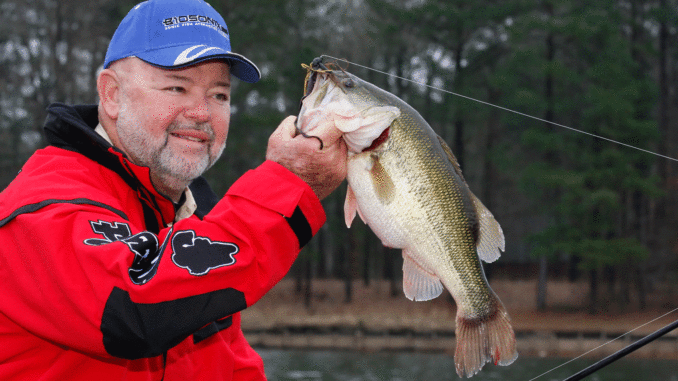
With strange new fishing techniques like the Alabama rig gaining momentum with professional anglers, local anglers who fish the Red River more than most believe this Bassmaster Classic will be won on some very simple baits fished in some very predictable ways.
“I would let the weather dictate what I do,” said guide Russ McVey, who holds the record for the largest bass ever caught on the Red River with a 13-pound beast of a bass. “I might have something like a spinnerbait or a crankbait that I could work kind of slow, but 99 percent of the day, I would be flipping a Texas-rigged creature bait or a jig. But an extended warming trend might have them reaching for a few standards like soft jerkbaits or trick worms.”
McVey says he would stubbornly stick with the Texas-rigged creature bait or jig regardless of water color or the weather. He says both would be great for catching limits and the kicker fish needed to win the Classic.
“The Red River has a 12-inch minimum length, and just about every fish caught will be over 12 inches,” McVey said. “If I’m catching numbers on a watermelon creature bait, and they’re all 2 1/2-pound fish, and I can’t better my weight, I’ll continue to throw the same style bait and just switch colors.”
If no brutal cold fronts come through, McVey predicted anglers would want to cover water quickly and let the fish dictate how fast or slow to fish. McVey likes to start fast and only slow down if the fish force him to.
“But if a cold front comes through, they better slow it down,” he added. “In that case, rather than pitching in and out of cover, they’ll be casting beyond the cover and dragging it through super slowly.”
Homer Humphreys pointed out that he thought some combination of three different lures would be the key to an angler winning the Classic. In no particular order, he selected a Texas-rigged Beaver, a square-billed crankbait like the Lucky Craft RC3.5 or Divin’ Ace and a compact spinnerbait like the Homer’s Clown with a colorado and Indiana blade combination.
“All of those baits just move so much water,” Humphreys said. “You can fish all three very slow, and that’s the whole key.
“When you think you’re fishing slow, you better slow down even more. And I wouldn’t throw any of them on anything less than 20-pound-test monofilament line.”
Humphreys added that he would fish these three baits in much the same way as McVey by positioning his boat in about 8 or 9 feet of water right on the edges of the ledges in the backwater oxbow lakes.
“If we get a warming trend, all they’re going to do is move up,” Humphreys said. “But if it doesn’t warm up, they’ve still got to eat. If it stays cool, though, they may not turn on until maybe 10:00, so being in the last flight could be an advantage.”


